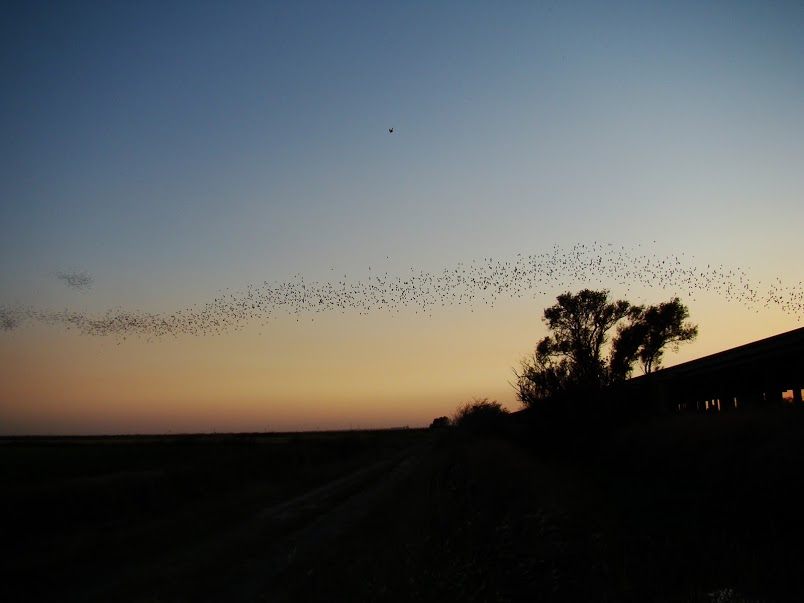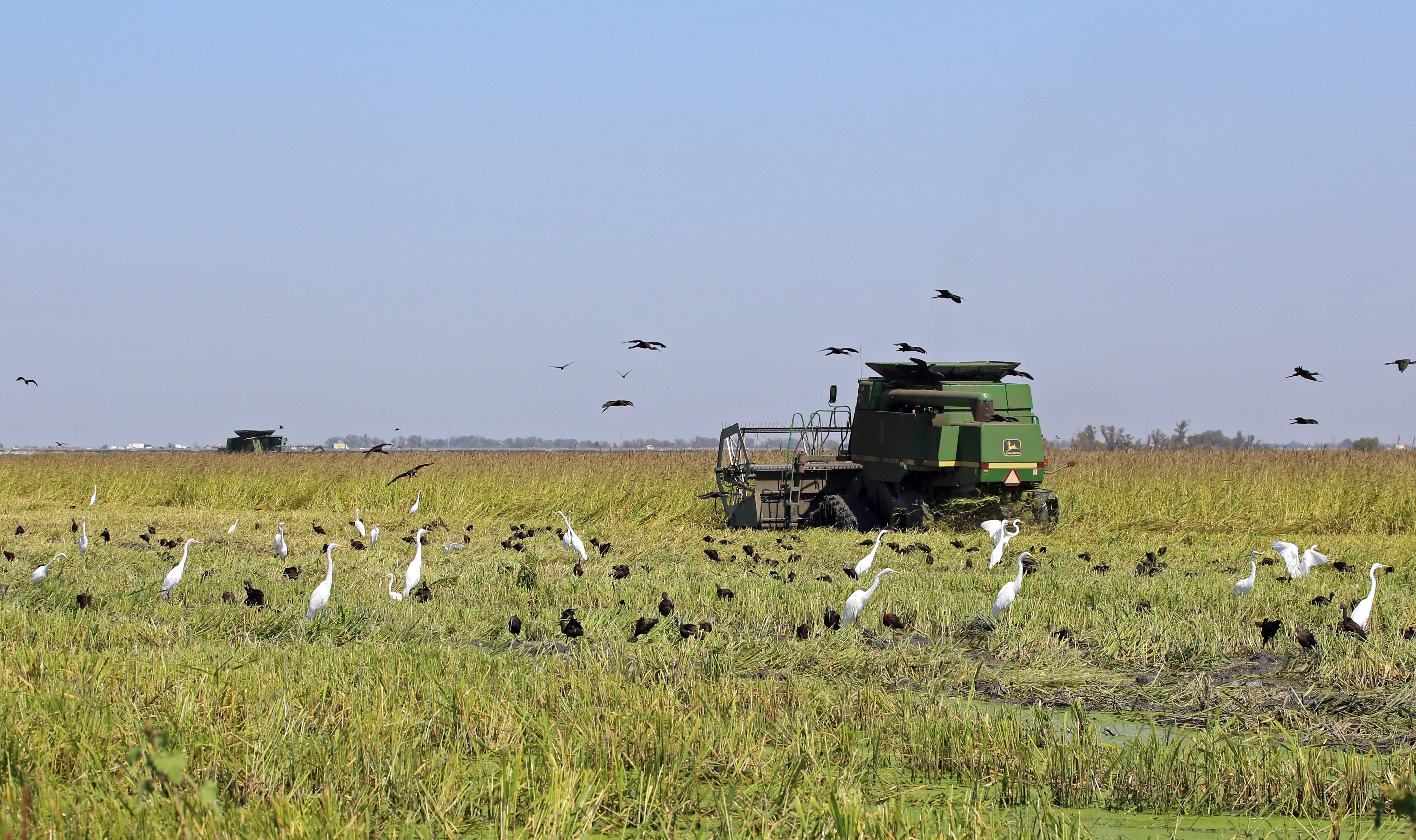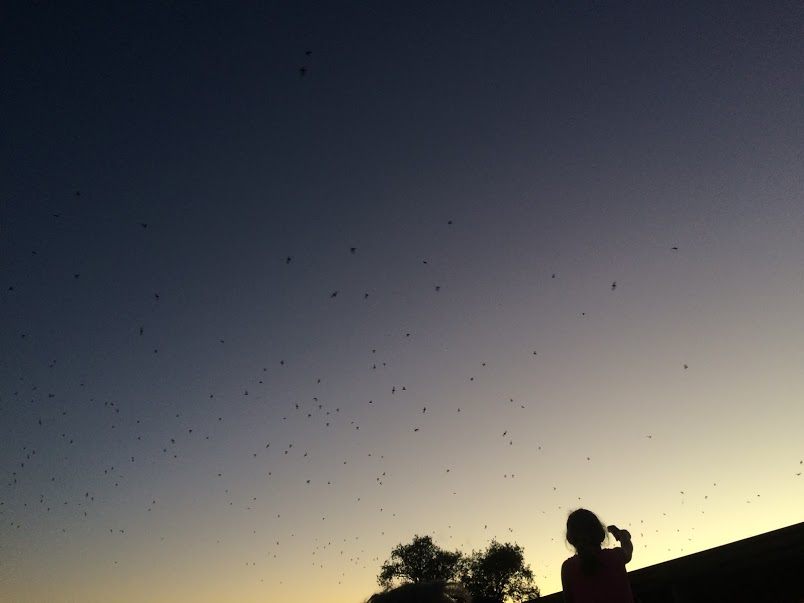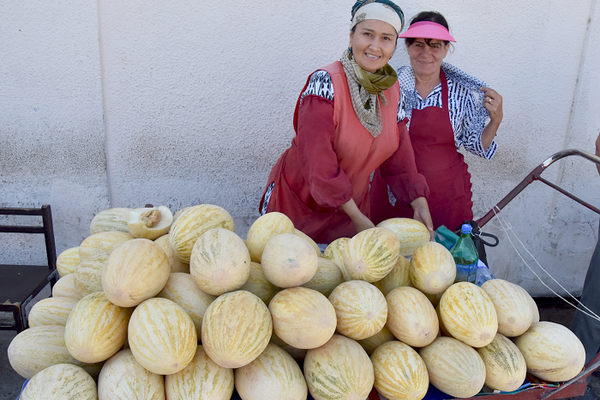‘Batnadoes’ Can Protect California’s Crops
Bats are farmers’ new best friends.

For anyone driving the Yolo Causeway, the sight can come as a shock. As the summer sun sets behind the marshy floodplain of the Yolo Bypass, a swirling stream of bats soars out from beneath the elevated thoroughfare. To the delight of bat-lovers and a local rice farmer, roughly a quarter-million bats have made the underside of the tall, 3.2-mile causeway their summer home.
The Yolo Bypass is a study in coexistence. Water routed there keeps the nearby city of Sacramento from flooding, and some of its 59,000 acres house the Yolo Basin Wildlife Area, a refuge for waterfowl, animals, and fish. It’s also home to rice farms: Sacramento Valley produces most of the nation’s sushi rice, and several are located within the bypass. Since rice farming also creates a habitat for marshland animals, the Wildlife Area even leases land to one rice farm.

At this farm near the Causeway, Mike DeWit grows wild rice. “Never really had a problem with insects,” he says laconically, “because of the bats.” For him, the bats are a benefit: They eat half their weight in insects each night, and pregnant bats eat even more. In his other rice fields in southern Yolo County, he has to spray for armyworms, and he knows rice farmers who have lost 20 percent of their crop to the pests. While weather conditions might also play a role, DeWit swears that the local bat population plays an outsized role in keeping his wild rice worm-free.
He’s likely right, according to Rachael Long, a farm advisor with the UC Cooperative Extension in the Sacramento Valley. She’s researched for decades how bats can help farmers control pests. “Armyworms are always a big problem in rice production,” she says. “Bats are predators, of armyworms, cutworms, and other pests.” Bats’ nocturnal feasts prevent adult moths from laying eggs that will hatch into hungry, rice-eating caterpillars, and, Long says, their impact cannot be overstated. When pest populations get out of control, “it can be really devastating.”

It’s a happy accident that so many bats have made the Causeway their summer home. The conditions are ideal for bats, says Mary Jean “Corky” Quirk. Quirk is program coordinator at the Yolo Basin Foundation, but she’s also the founder of NorCal Bats, a rescue and educational organization. As program coordinator, she leads the Foundation’s wildly popular Bat Talk and Walks, which are currently completely booked except for one date in late September.
The bats beneath the Causeway, Quirk says, are Mexican free-tailed bats, who are making a migratory stop. Since they form gigantic colonies, they are the region’s most numerous variety. The spaces between expansion joints beneath the Causeway make for comfortable roosting. Summer is when the bats come to give birth, and the hot asphalt of the bridge keeps everything warm, providing a heated nursery. Their large population has an equally large effect, Long says. “We’ve got three hundred thousand of them group feeding and patrolling over these fields,” she says. Quirk agrees. “These guys are the farmers’ best friend.”

The surrounding marshland and farms in the Bypass act as a bat buffet. Bats can travel far in search of food, flying up to 30 miles every night. They can also go vertical. According to Quirk, bats will chase moths two miles up into the air. The Causeway “batnado,” which is a locally famous phenomenon, consists of bats going out to feed each night. Quirk is ambivalent about the term, though. “That kind of sight is more associated with caves, where they do a spiral,” she says. “I call it a ribbon.”
All this hard work from the bats is burnishing their reputation. Outside of rice fields, they also eat insects in California’s orchards, which produce almonds, walnuts, and more. During Long’s 25 years of researching the topic, superstition and fear of rabies have long made people cautious of bats. But farmers are now interested in their insect-eating capabilities. Organic farmers, who have limited pest-fighting options, are particularly intrigued. According Long’s research—based on examining bat guano for the number of moths eaten each night at a local walnut orchard—a single bat can save a farmer up to $10 a season in pest control.

Multiply that by a quarter-million and … well. “If they’re saving me $30 to $40 per acre a year? Because of the benefits, I love bats,” DeWit tells me. He’s not alone. Long regularly receives calls about bats, and she says roughly half are from farmers looking to attract them. She advises farmers to build bat houses. (Although both Long and Quirk warn emphatically against touching bats: It’s extremely rare, but they can carry rabies.) It’s not easy to attract bats, though, because bats like to return to where they were born.
That means the Yolo Causeway will host bats for many summers to come. The Mexican free-tailed bats arrive in spring and disperse in September. Where they go, Quirk says, remains a mystery.
Gastro Obscura covers the world’s most wondrous food and drink.
Sign up for our regular newsletter.



































Follow us on Twitter to get the latest on the world's hidden wonders.
Like us on Facebook to get the latest on the world's hidden wonders.
Follow us on Twitter Like us on Facebook